

Hello ladies and gentlefriends! We present you an all exclusive interview with Game Producer Tim Shannon of S2 Games! Here we will introduce you to Strife, the upcoming MOBA game that is still in Closed Beta. S2 Games have also created Heroes of Newerth and Savage 1 and 2, and have definitely left their permanent mark in the gaming industry by setting a current standard as to what MOBAs should look and play like. With that experience, they are looking to set an entirely new standard for the MOBA genre. Read further to get an inside look on Strife, part 2 of the interview. (Read part 1 here)
A: This is a key innovation that we think will set us apart in the genre. The gold sharing system contributes to reducing a number of issues faced in current gen MOBAs and reflects two key design goals:
First and foremost, it helps promote a positive community experience. This happens both through reducing conflicts over last-hitting and promoting equitable farming and team-fighting. In winner-take-all models, the person getting the last hit gets the lion’s share of the reward opening the door for all sorts of conflicts among team members. In a collaborative model such as ours, these sights for disagreement are largely removed by sharing resources equitably and sometimes through inflationary mechanisms – meaning that there are cases where having more people involved will net a higher total reward for the team. Further, by incentivizing collaborative play, there are tangible rewards associated with positive team interaction. Rather than relying on nebulous statistics to encourage players to fight less in a competitive resources model in the hopes of increasing their chances of victory, we have built a game system where there is little need for competition among team members and so engaging in toxic behavior can pretty much only result in a negative outcome.
Second, it promotes a level playing field where skill and strategy win out over knowledge of esoteric mechanics and the current Meta. The collaborative model shifts the meta way from the single or dual hard-carry model towards one where all team members carry one another. In Strife, we have focused on normalizing potential end-game hero contribution such that getting farmed can be equally beneficial to all heroes. This doesn’t mean that all heroes are the same or equal, rather, that equally farmed heroes will be able to contribute comparably to their team in the late-game phase. To be more concrete, a farmed hero built to be an ADC will probably win one on one against a hero that has invested similar farm into support items at most points during the game – that’s a fact of differentiation in build focus. That being said, in a team fight where both teams have balanced compositions, that support hero will be able to provide benefit to their team commensurate to the ADC’s damage output meaning that the end-game tends to require everyone’s input – not just your carry’s.
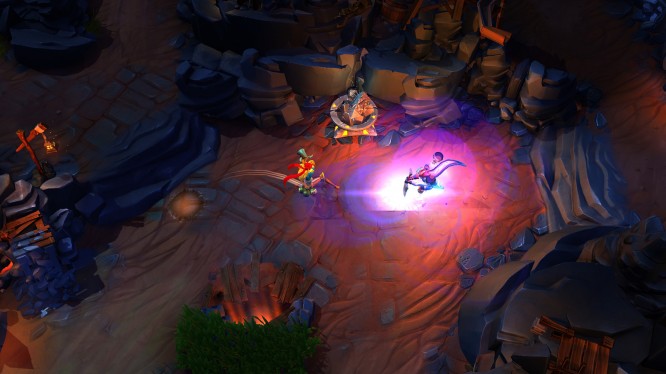
A: We think there are three things that set the Strife map apart from competitors.
1) Smaller size. We shrunk down the map for Strife in order to promote team fights. This is achieved through reducing penalities associated with travel times. We think this will help encourage more player on player confrontation because less farm is forgone in service of ganking so there are lower stakes for failing. Similarly, getting back to lane after dying takes less time and, coupled with shorter respawn times early on, reduces the risk of playing aggressively in lane.
2) Krytos. The neutral “boss” camp in the Strife Arena is one where you fight Cindara in order to gain access to Krytos – a giant white ape that spawns in a selected lane and behaves like a massive Brawler that disables any building he touches. Early on, Krytos is pretty weak and so has a minimal effect on the game; but as time passes, he gains strength and becomes a potential game breaker – assuming the team he is supporting utilizes him well.
3) Cleanly communicated movement mechanics. We wanted everyone to be on a level playing field when it came to understanding how heroes move around the map. Towards that end, we focused on making sure that we cleanly and consistently communicated movement and vision pathways and blockers. This way everyone will be able to quickly understand the mechanics – reducing frustration, but only elite players will be able to exploit them to their fullest potential.
A: Baldir used to give a team wide buff, but this was removed in favor of creating a mini/final boss relationship between Baldir and Cindara that added more variety to play.

A: We are currently in the middle of a push to beef up the hero pool and plan to keep adding new content up through open beta and release.
A: Currently we’re crunching to get hero ideas we shelved to focus on other features into the game. This development schedule will abate once we reach open beta and are more or less officially “released.” Going forward from there, we will be regularly patching to improve the experience and add new content. However, our hero addition rate is something that we will need to play around with such that we strike the optimal balance between our three factors for new heroes:
1) Adding something new to the game that provides additional replayability.
2) Making sure that each hero brings something interesting to the table and doesn’t clutter the hero pool.
3) Controlling the initial burden of knowledge such that new players are better able to be incorporated into the community.
A: We are committed to creating and maintaining a level playing field, thus all current and future heroes will be free-to-play and available to everyone.
A: I’m not sure I understand this question. We’re currently releasing customized gear sets (alternate avatars) and dye packs (different skins for the model) for each hero and plan to keep adding new and compelling content in the future. Beyond that I’m not sure what you’re looking for in terms of customization?
We feel as though pets and our eventual crafting system will add enough variability in play to the game and account persistent progression that we don’t need to add another layer of game relevant customization at the level of the hero for release. In the future… who knows?
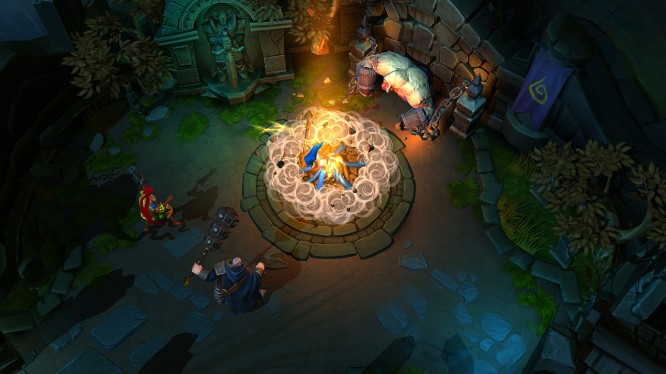
A: This was one of the key starting points for the design of Strife – can we design a game that reduces the amount of toxicity within communities? And as I have spent time talking about above, this goal of designing out features that promote intra-team conflict and designing in features that reward collaboration has been central to our entire development process. In addition to the already listed features, we are currently in a data gathering and testing phase for an in-game Karma system that would allow the community to police itself through rewarding or punishing players for their behavior in and out of game. We think that this system completes our initial model for encouraging a friendly, humanized community where all players feel welcome.
A: Yes, although we are currently discussing the model we would like to use. We think that eSports are best when they develop organically and so are interested in community involvement in creating a competitive scene for Strife in the pre and post release environment.

A: Potentially, like I mentioned before, this comes down to how our community best wants us to serve them in regards to eSports.
A: I’m looking forward to hearing what such such a MOBA literate community like there is in SEA has to say about strife. This project embodies a lot of people’s passions for the genre and we’re really excited to get it into people’s hands and hear what they think so we can make the best game we possibly can.
Thank you so much Tim for shedding some light on Strife. Can’t wait to see what the future will bring for this promising new title. If you want to read part one of the interview, click here.
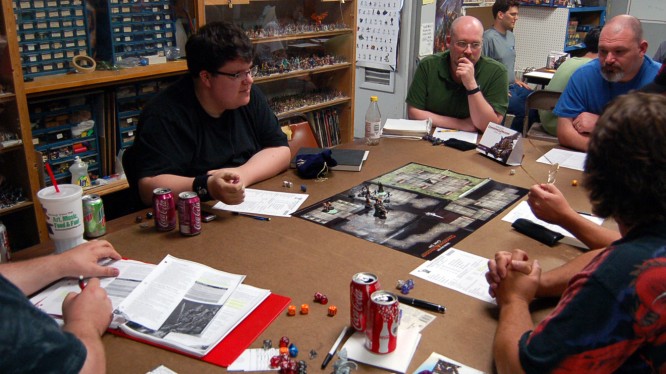
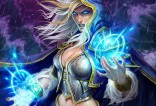
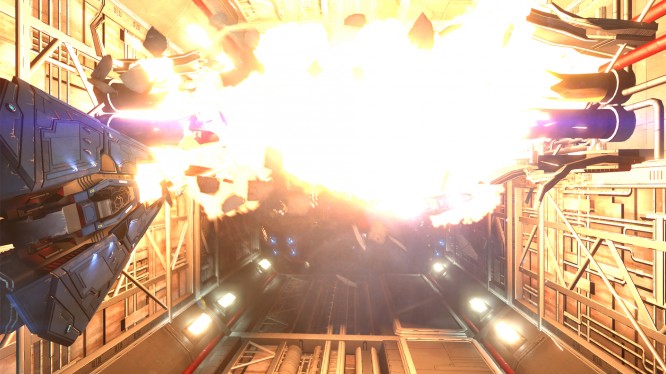

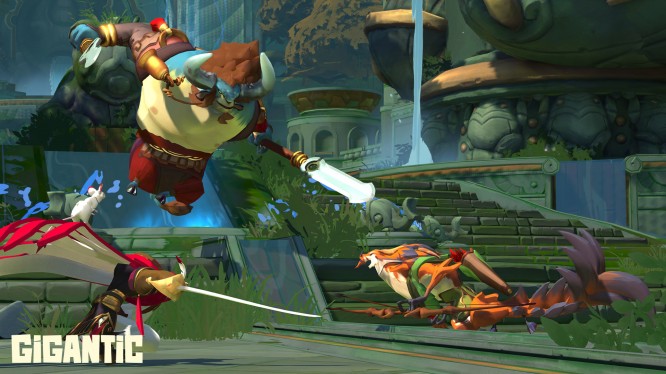 PAX Prime Gigantic Interview .
PAX Prime Gigantic Interview .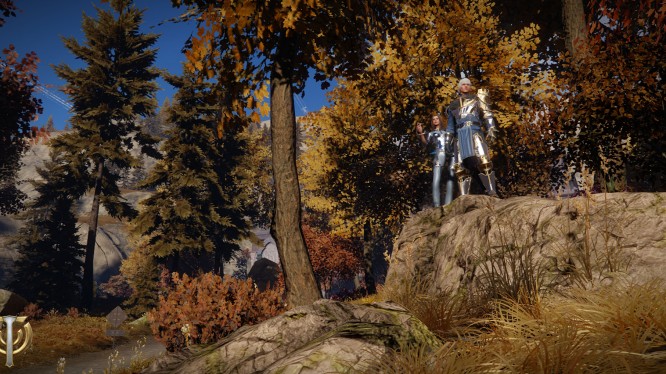 Skyforge Exclusive Interview and Screenshots .
Skyforge Exclusive Interview and Screenshots . The Incredible Adventures of Van Helsing 2: In-Depth Interview .
The Incredible Adventures of Van Helsing 2: In-Depth Interview . Beta Data: December 12, 2014 .
Beta Data: December 12, 2014 .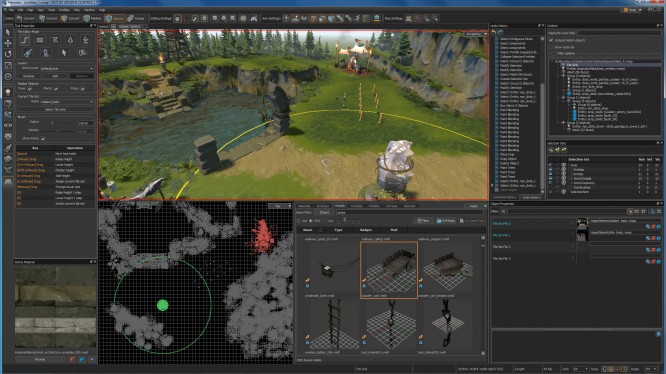 MOBA Monday: Dota 2 Reborn .
MOBA Monday: Dota 2 Reborn .